10 Chapter 10: Postmodernism
Dr. Della Perez
Postmodernism
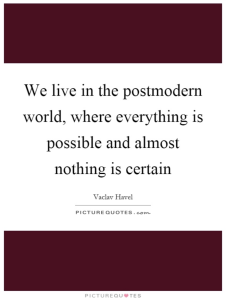
Postmodernism is also called Postmodern Constructivism, and according to Webb et. al. (2010), it has been defined as “a contemporary philosophy, ideology, movement, and process” (p. 87). The reason it has been defined in this way is that it pulls from a combination of philosophies, including: Pragmatism, Existentialism, Social Reconstructionism, and Critical Pedagogy (Webb et. al., 2010). Each of these philosophies provide essential elements of the framework for Postmodernism. Perhaps the most important of which is critical pedagogy, because it incorporates the technique of critical theory (Webb et. al., 2010).
This chapter will explore the impact of critical theory on Postmodernism and the key characteristics of this philosophy. In addition, key information related to how this philosophy of education approaches the curriculum will be presented. An overview of the instructional methods used within this philosophy, along with a discussion about the role of the teacher and role of the learner will also be presented. Finally, key proponents of postmodernism and their contributions to this philosophy of education will be presented.
Characteristics of Postmodernism
10.1 Essential Questions
By the end of this section, the following Essential Questions will be answered:
- What combination of philosophies does Postmodernism represent?
- What are 3-4 of the key beliefs held by Postmodernist?
- What questions do critical theorists ask and why are they important?
- What are the five presuppositions inherent in the Postmodern worldview according to Hurd?
Postmodernism is considered to be one of the most contemporary philosophies of education. As previously stated, this philosophy represents a combination of the following philosophies: Pragmatism, Existentialism, Social Reconstructionism, and Critical Pedagogy (Webb et. al., 2010).
There are many key beliefs held by Postmodernists. One of the first is that there are no eternal universal truths and values (Webb et. al., 2010). Rather, they believe that reality is subjective or based on the interpretation of the person living it at the time. For this reason, Postmodernists would argue that individuals construct their own meaning from personal experience and that history is itself is a construction based on individual experience (Newman, 1998). That is why Giroux (2007) suggests that “democracy cannot work if citizens are not autonomous, self-judging, and independent – qualities that are indispensable for students if they are going to make vital judgments and choices about participating in and shaping decisions that affect everyday life, institutional reforms, and governmental policy” (p. 195). Based on this point of view, would you agree with Giroux’s assessment about what is necessary for democracy to work?
Second, Postmodernist question scientific realism. They do this by “refuting epistemological claims that science (in particular, the scientific method) is objective and unbiased” (Webb et. al., 2010, p. 87). Think about what you know about the scientific method, would you agree with this conclusion? Why or why not?
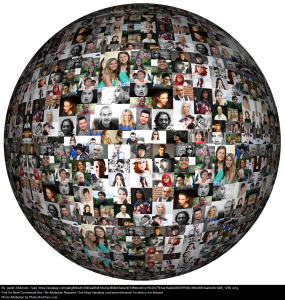
Postmodernists also challenge educators to understand that diversity, inclusion, and multiplicity are essential (McLaren & Torres, 1998). Given the diversity of classrooms across the United States today, understanding diversity does not seem challenging. Nor does the concept of inclusion. However, there are still educators across the country who are not adequately prepared to address the needs of our culturally diverse student populations and students who need additional support in the classroom.
Third, Postmodernist believe that critical inquiry and political awareness are very important (Henderson, 2001). This emphasis on critical inquiry and critical pedagogy, incorporates elements of critical theory. As implied, critical theory is a “process of analyzing and critiquing political, economic, social, and educational institutions” (Webb et. al., 2010, p. 87).
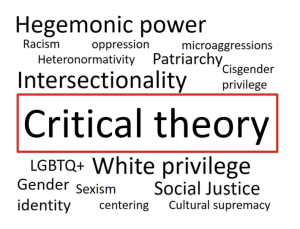
Questions asked by critical theorists include:
- Who controls the school?
- Who chooses the curriculum?
- Who hires the teachers?
- Who chooses the textbooks?
- Who writes the textbooks?
- Who has the power?
(Webb et. al., 2010, p. 87)
Take a moment to reflect on these questions. If you had to answer them, what would your responses be?
Finally, Hurd (1998), identifies the following five presuppositions inherent in the Postmodern worldview:
- The quest for truth is a lost cause.
- A person’s sense of identity is a composite constructed by the forces of surrounding culture.
- The languages of our culture (the verbal and visual signs we use to represent the world to ourselves) literally “constructs” what we think of as “real” in our everyday existence.
- “Reality” is created by those who have power.
- We should neutralize the political power inherent in language by “deconstructing” it.
As you reflect on these presuppositions, think about the other philosophies of education you have learned about. What correlations can your find? What contrasts do you see?
10.2 A Closer Look
The following article, titled: Postmodern Education and the Concept of Power, provides a close- up look at Postmodernism in action. As you read the article, please think about some of the key characteristics you have learned in this section. After you are done reading the article, please respond to the Questions to Consider that have been posed below.
- How is critical theory defined in this article?
- What are the three dimensions of power and why are they important?
- What is discourse analysis?
- What are the main conclusions of this article?
- What did you learn about postmodernism from reading the article?
Curriculum
10.3 Essential Questions
By the end of this section, the following Essential Questions will be answered:
- What do Postmodernist believe about how the curriculum has been written from an historical perspective?
- What is the focus of the Postmodernist curriculum?
- Why is it important to teach critical literacy in the Postmodernist curriculum?
- Do you think the focus of this curriculum is beneficial for students? Why or why not?
When viewed historically, Postmodernists believe that the curriculum has been written from a biased perspective (Webb et. al., 2010). According to research by (Aronowitz & Giroux, 1991), this perspective has served to identify and honor only specific histories and experiences, which in turn has marginalized or silenced the experiences of subordinate groups.
As a result, the focus of the Postmodernist curriculum is to challenge cultural politics that promote inequality based on class, gender, sexuality, race, ethnicity, or nationalism (Webb et. al., 2010). One of the main ways this is done in the Postmodern curriculum is by teaching through a “social justice” framework. McLaren (2003) advocates for teaching critical literacy, which would empower students to identify and unmask those human beliefs and practices that limit freedom, justice, and democracy.
Within the Postmodernists curriculum, students would also be exposed to a wide variety of reading materials (Webb et. al., 2010). This would not only expose them to lot of new information and resources, it would also challenge them to think critically about issues related to cultural inequality and identify ways to advocate for social justice.
10.4 A Closer Look
The following video provides review of some of the key elements of postmodernism. As you watch it, consider the information you have learned and ask yourself: What links can I make between the information in the video and the information in the chapter? After watching the video, please respond to the Questions to Consider.
- What is Postmodernism according to the video?
- What were some of the different areas the presenter linked this philosophy to (i.e., law, psychology, etc.)?
- What additional information did you learn about Postmodernism from the video clip?
Instruction in the classroom
10.5 Essential Questions
By the end of this section, the following Essential Questions will be answered:
- What instructional methods are used in the Postmodernist classroom?
- What do Postmodernist teachers do to support students learning?
- What is the teachers role in the Postmodernist classroom?
- What is the students role in Postmodernist classroom?
Critical inquiry and critical pedagogy play a central role in the postmodernist classroom. As such, postmodernists would include any instructional method that would help students recognize and understand the notion of hegemony, in which the dominant culture exercises domination over subordinate classes or groups with the partial consent of the subordinate group (Wink, 2005).
Postmodernists also incorporate the learning theory of constructivism, whereby students construct their own knowledge and meaning via:
- Hands-on, problem-solving activities.
- Students questioning to promote critical literacy.
- Critiquing and examining culture and institutions.
- Exploring the contradictions and variable meanings
of the language we use in our speech and text
(Derrida, 1976).
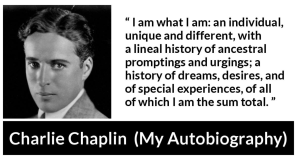
- An in-depth exploration of students‘ autobiographical histories, languages, and cultures.
- Discussion of the hidden curriculum, or “unexpressed perpetuation of the dominant western culture through institutional processes” (Wink, 2005, p. 46).
- Using the text, or “any set of symbolic objects through which we attempt to communicate something and through which we create meaning (classrooms, film, books, clothing)” would be incorporated (Martusewicz, 2001, p. 11).
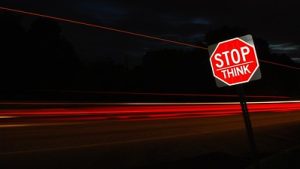
- Do you think of the instructional approach of the Postmodernist classroom is effective? Why or why not?
- If you had to follow this instructional method, how would you inspire your students to construct their own knowledge and meaning? Please provide at least two specific examples.
Teachers Role
Like the Social Reconstructivist teacher, the Postmodernist teacher is often identified as a “change agent.” According to Horn (2002), the terms scholar-practitioner leader and critical thinker are also metaphors that describe the Postmodernist teacher.
The Postmodernist teacher’s role is to practice and model the “doing of critical theory” (Webb et. al., 2010, p. 89). To effectively practice and model critical theory, teachers need to demonstrate effective strategies for: questioning, critiquing, and analyzing. On the surface, these skills seem very simple, but they are not. A very skilled teacher is needed to effectively put these skills into practice on a daily basis as well as teach their students how to apply them.
Finally, the Postmodernist teacher “recognizes the power and influence they have over their students, their peers, parents, and the larger community” (Webb et. al., 2010, p. 89). So they work hard to keep open lines of communication with others, avoid alienating or offending others, and work hard to always respect the rights of all individuals to share their points of view.

- What do you think is most challenging about being Postmodernist teacher?
- If you were a Postmodernist teacher, how would you make sure you kept open lines of communication with peer, parents, and the larger community?
Students Role
Within the Postmodernists classroom, students are supposed to voice their opinions and question the purpose of major institutions in society, including the school (Webb et. al., 2010). In particular, students are encouraged to challenge the curriculum of the school, especially when it comes to the hidden curriculum.
Postmodernist firmly believe that students have the capacity to understand that humans are responsible for the phenomena of wars, poverty, violence, corruption, and social, political, economic, and ecological injustices (Martusewicz, 2001). So they encourage students to look at societal issues that are culturally and politically inequitable and challenge them.

- What do you think is most challenging about being Postmodernist teacher?
- If you were a Postmodernist teacher, how would you make sure you kept open lines of communication with peer, parents, and the larger community?
Key Proponents
10.6 Essential Questions
By the end of this section, the following Essential Questions will be answered:
- Who were the key proponents of Postmodernism?
- What impact did each of the key proponents of Postmodernism have on this philosophy of education?
Critical theory was first associated with the Frankfurt School of philosophy and social theory, which began in the 1920s, flourished in the 1930s in Germany and in the 1940s in the United States, and continued throughout the 1950s and 1960s (Kincheloe, 2004). Some of the leaning proponents of the Frankfurt School included Karl Marx, Theodor Adorno, Max Horkheimer, Herbert Marcuse, Jurgen Habermas, and Eric Fromm.
Today’s contemporary philosophy of Postmodernism is one of the most influential philosophies in education. Leading proponents include Michael Apple, Stanley Aronowitz, Jacques Derrida, Henry A. Giroux, Joe Kincheloe, and Peter McLaren. In this section, a brief overview of the work of Michael Apple and Henry A. Giroux and their contributions to postmodernism will be presented. Apple and Giroux have been selected for closer examination due to their impact on education. As you read about each one and the information presented on their contributions, please reflect on the similarities and differences among them.
Michael Apple
Michael Apple is a John Bascom Professor of Curriculum and Instruction and Educational Policy Studies at the University of Wisconsin- Madison in Madison, Wisconsin. He is highly regarded as a critical theorist and has written extensively on this topic.
He is also well known for his work which deconstructs and analyzes the educational system using thought-provoking and illuminating critiques. Based on his work, he is highly regarded as an important voice in “contemporary progressive education.”
10.7 A Closer Look
The following article provides a closer look at the work of Michael Apple. Please take a moment to read though this article and then respond to the Questions to Consider.
- What does Apple mean by globalization?
- What are the “realities” we need to face as outlined in this article?
- What is the “First World” and why do we need to pay attention to it?
- What are the uses of “Powerful” Theory?
- What are the key principles identified by Apple in this article?
- What are the tasks of the critical scholar/ activist in education?
- What is the most important message you took away from this article?
Global Crises, Social Justice, and Teacher Education [https]
Henry A. Giroux
Henry A. Giroux is currently a Global Television Network Professor of English and Cultural Studies at McMaster University in Canada. He is considered to be one of the foremost contemporary writers on critical pedagogy, schooling, higher education, and neo- liberalism (Nicholls, 2010). He also strongly advocates for a recommitment to community development and learning for social justice, equality and democracy.
What makes his work so impressive is that he promotes not only a language of critique of oppressive institutions and policies, but also a language of possibility. Research by Nicholls (2010) found that Giroux’s initial work concentrated on the role of teachers in both the school system and higher education and saw them initially as transformative intellectuals and in his later work as more politically charged public intellectuals.
10.8 A Closer Look
The following video clip provides a more in- depth look at Henry A. Giroux and his beliefs about critical pedagogy. As you watch the video, think about the information he is sharing and how his views have been influenced by other key proponents you have learned about. When you are done watching the video, please respond to the Questions to Consider.
- How did Giroux define his role in critical pedagogy?
- What was the catalyst for his emergence into critical pedagogy?
- Who was his inspiration?
- What where his goals when it came to critical pedagogy?
- Who does Giroux attribute the origin of the term critical pedagogy to?
- How did Paulo Freire influence Giroux’s work?
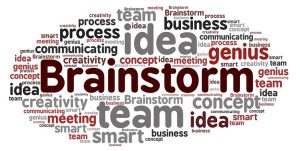
Reflect on your learnings about Postmodernism. Come up with one “real-world” example of your own that illustrates critical literacy being applied in practice in an educational setting.
Once you find your example:
- Make a copy of it and/or have the complete APA citation for it AND,
- Write a one paragraph summary (5-6 sentences) that states why/how it is an example of essentialism.
Acceptable examples of a “real-world” example in practice of critical literacy include: a newspaper article or story, a journal article or book, or a YouTube clip.
References
Giroux, H. (2007). Educated hope in dark times: Critical pedagogy for social justice. Our Schools/Our Selves (17:1), 195-202.
Henderson, J. G. (2001). The curriculum word in postmodern times. JCT: Journal of Curriculum Theorizing, (17, 3), 123-124.
Horn, R. A. (2002). Differing perspectives on the magic of dialogue: Implications for a scholar-practitioner leader. Scholar-Practitioner Quarterly, I(2) 83-102.
Hurd, R. W. (2001, Feb. 26). Postmodernism. Gutenberg College. https://gutenberg.edu/postmodernism/
Kincheloe, J. L. (2004). The knowledges of teachereducation: Developing a critical complexepistemology. Teacher Education Quarterly, 31(1), 49-66.
Martusewicz, R. ,A. (2001). Seeking passage: Post-structuralism, pedagogy, ethics. Teachers College Press.
McLaren, P. (2003). Life in schools: An introduction to critical pedagogy in the foundations of education (4th ed.). Allyn and Bacon.
McLaren, P., & Torres, R. (1999). Racism and multicultural education : Rethinking ‘race’ and ‘whiteness’ in late capitalism. In S. May (Ed.), Critical multiculturalism: Rethinking multicultural and antiracist education (pp. 69-95). Routledge.
Newman, F. (1998). Still on the corner and other postmodernism political plays (Friedman, D., Ed.). Castillo.
Nicholls, D. (2010). Henry Giroux: Neoliberalism’s nemesis. The Encyclopedia of Pedagogy and Informal Education. https://infed.org/mobi/henry-a-giroux/
Webb, L. D., Metha, A., & Jordan, K. F. (2010). Foundations of American Education. Pearson Merrill.
Wink, J. (2005). Critical Pedagogy: Notes from the Real World (3rd ed.). Pearson.
